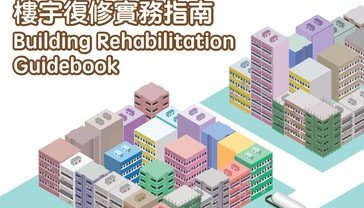To achieve the goal of "prevention is better than cure”, maintenance must be carried out persistently. However, the expenses involved in regular maintenance cannot be covered solely by the monthly management fees. Therefore, establishing financial reserves as early as possible becomes indispensable. Whether for newly built or existing buildings, it is necessary to formulate a maintenance plan. At the same time, a reserve fund should be set up with regular contributions to cover future maintenance expenses, avoiding the need for owners to make substantial one-time payments, thus significantly alleviating financial pressure on the owners.
Schedule 7 of the current Building Management Ordinance (BMO), which contains the Mandatory Terms of the Deed of Mutual Covenant, specifies that managers shall establish and maintain a special fund to cover expenditure of a kind not expected to be incurred annually. The revised Deed of Mutual Covenant Guidelines (DMC Guidelines) published in 2006 by the Lands Department also stipulates the requirement for setting up a special fund in accordance with the Ordinance. The fund is intended to cover expenses for renovations, improvements, and maintenance of common areas, as well as other associated expenses. In other words, establishment of a special fund ensures that the owners’ corporation and owners are financially prepared to address expenditures beyond routine maintenance tasks, such as the replacement of water pumps, external wall inspections, and comprehensive building inspection and rectification works.
However, the BMO and DMC Guidelines fall short of providing clear, standardised requirements or suggestions on how owners should formulate maintenance plans and contribution schedules. The lack of clarity often leaves owners without the necessary guidance to develop effective maintenance plans, set accurate financial budgets, and implement contributions effectively.
Property managers and owners should refer to the "Maintenance Manual" to develop a 10-year maintenance plan. The plan should outline the recommended maintenance cycles for various building components and facilities, as well as the necessary maintenance tasks. This aids in estimating the costs involved in each maintenance item over the period, helping owners to better understand the maintenance needs at different times within the cycle.
Property management companies can utilise this maintenance plan to evaluate overall maintenance costs and determine the appropriate balance level for the special fund. Following this, they can calculate the cost each unit should bear based on undivided shares or management shares, and propose an annual contribution plan for discussion and resolution at the owners’ meeting. These contributions can be collected together with the monthly management fees to help cultivate the habit of regular contributions among the owners.
Preventive maintenance should begin early, especially for newly built buildings. By initiating regular contributions to a special fund at the time of occupancy, owners can prepare for preventive maintenance for the first 10-year cycle. This proactive approach ensures timely upkeep of building components and facilities. Compared to handling accumulated damage all at once after 30 years, it relieves owners from the need of making substantial one-time payments, significantly reducing financial stress. Additionally, it reduces the risk of minor issues escalating due to delayed repairs. This effectively slows down the ageing process of the building.
Property management companies and owners are encouraged to refer to the "Guidelines and Template for Preparing Maintenance Manual for Residential and Composite Buildings" by the Urban Renewal Authority to compile a suitable maintenance manual. Following that, a 10-year maintenance plan can be formulated based on the maintenance manual, estimating the necessary expenses for non-annual maintenance tasks during this time period and discussing proposed regular contribution schedules.








